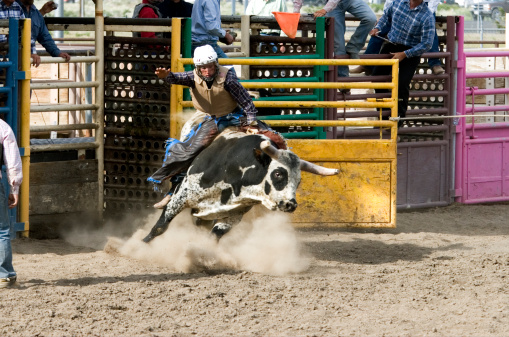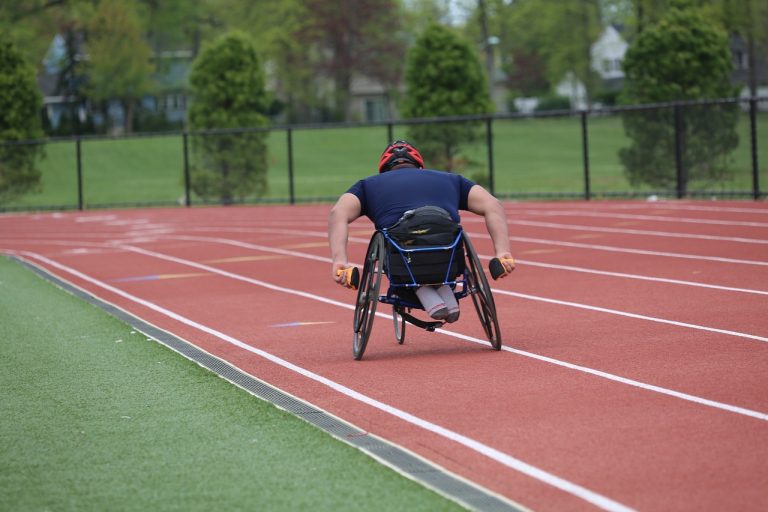General Rules of Kite Boarding
You’ve got your kite ready, the wind is just right, and the waves are calling your name. But before you rush into the exhilarating world of kiteboarding, there are essential rules to follow to ensure both your safety and the safety of others. From the proper safety gear to understanding weather conditions and mastering kite control, these guidelines will set the foundation for a successful and enjoyable kiteboarding experience. But there’s one critical aspect that can make or break your session – can you guess what it is?
Safety Gear
Make sure you’re fully equipped with the necessary safety gear before hitting the waters for a thrilling kite boarding session. Your safety gear is your shield against the unpredictable elements of nature. It’s not just a formality; it’s your lifeline in the world of kite boarding. When it comes to safety gear, there are a few essentials you must have in your arsenal.
First and foremost, your helmet is essential. Choose a helmet specifically designed for water sports to protect your head in case of any falls or collisions. Additionally, invest in a good quality impact vest. This will not only provide you with flotation but also cushion any impacts you might face while kite boarding. Properly fitting foot straps and harness are also vital. Make sure they are snug and comfortable, allowing you to control your board and kite effectively.
Furthermore, don’t forget about your safety leash. This essential piece of equipment makes sure that you stay connected to your kite at all times, even if you have to release your control bar. Familiarize yourself with the proper use of each safety gear item before heading out into the waters. Remember, your safety is paramount, and being prepared with the right gear can make all the difference in ensuring a safe and exhilarating kite boarding experience.
Kite Control
Ensuring precise and confident kite control is fundamental to mastering the art of kite boarding. Kite steering is your gateway to freedom on the water. The way you manipulate the kite directly affects your speed, direction, and overall experience. When it comes to kite control, understanding wind direction is key. The wind is your engine, propelling you across the waves, but it can also pose challenges if not respected.
To excel in kite boarding, you must become one with the wind. Feel its subtle shifts and harness its power to guide your kite with finesse. As you steer the kite, each movement should be deliberate and calculated, responding seamlessly to the wind’s whispers. Adjusting the angle of the kite in relation to the wind will determine your speed and trajectory.
Picture yourself gliding effortlessly across the water, the wind dancing through your hair as you command the kite with ease. This sense of control is what every kite boarder craves – the ability to soar through the air or skim the water’s surface with grace and precision. Embrace the challenge of mastering kite control, and you will open a world of exhilarating possibilities on the waves. Trust in the wind, hone your kite steering skills, and let the elements carry you to new heights.
Weather Conditions
As you hone your kite control skills, the weather conditions play a pivotal role in determining your success and safety out on the water. Understanding the wind patterns and how they affect your ride is essential for a thrilling and secure experience. Here are some critical weather-related aspects to take into account:
- Wind Patterns: Different wind strengths and directions can greatly impact your kiteboarding session. Be aware of local wind patterns and how they influence the water conditions to make the most of your time on the waves.
- Skill Progression: Weather conditions can present opportunities for skill development. Embrace varying conditions to challenge yourself and advance your kiteboarding abilities. Practice in different winds to become a versatile rider.
- Beach Etiquette: Respect other beachgoers and water users by following proper kiteboarding etiquette. Launch and land your kite in designated areas, and always give priority to swimmers and other watercraft.
- Board Maintenance: Weather elements like sand and saltwater can take a toll on your gear. Regularly inspect and clean your board to ensure it performs optimally and lasts longer. Proper maintenance can prevent unexpected equipment failures while you’re out on the water.
Mastering the art of kiteboarding involves not only honing your skills but also being in tune with the weather conditions. Embrace the elements, stay safe, and enjoy the freedom that comes with harnessing the wind.
Right of Way
Sailing the waters while kiteboarding, understanding the proper of way rules is essential for a safe and enjoyable experience on the waves. Right of way etiquette guarantees smooth rides and avoids collisions. Here is a breakdown of the key points to keep in mind:
| Proper of Way Rules | Description | Common Mistakes |
|---|---|---|
| Upwind rider | Has the proper of way over the downwind rider. | Ignoring the direction of the wind. |
| Rider launching | Yields the proper of way to the rider on the water. | Failing to give way to the rider in motion. |
| Faster rider | Has the proper of way over slower-moving riders. | Underestimating the speed of others. |
Understanding the proper of way ensures a harmonious flow on the water. When conflicts arise, communication is key. Signal your intentions clearly and be ready to adjust your course to avoid accidents. By respecting each other’s space and rights on the water, you contribute to a safer and more enjoyable kiteboarding environment for everyone.
Launching and Landing
Now, let’s talk about the important aspects of launching and landing in kiteboarding. When preparing to launch, make sure you follow safe procedures to keep yourself and others around you out of harm’s way. Equally important is mastering the proper techniques for landing smoothly and safely after your exhilarating ride.
Safe Launch Procedures
Embrace the thrill of kite boarding safely by mastering the essential launch procedures for a successful start to your exhilarating adventure on the water. When preparing to launch your kite, make sure you follow these key steps:
- Check Wind Direction: Always be aware of the wind direction to position yourself correctly.
- Watch Out for Beach Obstacles: Scan the area for any obstacles that could interfere with your launch.
- Time it Right: Wait for the opportune moment to launch when the wind is steady.
- Position Your Kite: Position your kite at the edge of the wind window and make sure lines are tangle-free.
Following these procedures will set the stage for a smooth takeoff, propelling you into the liberating experience of kite boarding.
Proper Landing Techniques
When landing after a thrilling kite boarding session, it is essential to execute proper techniques to guarantee a safe and smooth conclusion to your adventure on the water. Landing etiquette is key to make sure not only your safety but also the safety of others around you. One common mistake is losing focus on your surroundings during the landing process. To master the landing technique, focus on your body positioning. Keep your knees slightly bent, absorb the impact with your legs, and lean back slightly to control your speed. By maintaining a good balance and staying alert, you can gracefully touch down after an exhilarating ride. Remember, a successful landing is the perfect ending to your kite boarding escapade.
Communication Signals
Start by mastering the essential communication signals in kite boarding to guarantee seamless coordination with your team and enhance safety on the water. Communication is key in this exhilarating sport to make sure everyone is on the same page and can react swiftly to changing conditions. Here are some critical signals and cues to integrate into your kite boarding routine:
- Hand signals: Establish clear hand signals with your team before hitting the water. These signals can include directions to indicate where you want to go or warnings about potential hazards.
- Verbal cues: Develop a set of concise verbal cues that are easy to understand amidst the wind and waves. Use simple commands like ‘left,’ ‘right,’ or ‘stop’ to communicate effectively with your team members.
- Nonverbal communication: Pay attention to nonverbal cues from your fellow kite boarders. Sometimes a quick nod or a gesture can convey important information without the need for words.
- Safety protocol: Prioritize safety in all your communications. Establish protocols for emergency situations and make sure everyone knows how to respond swiftly and effectively to keep each other safe on the water.
Mastering these communication signals will not only enhance your kite boarding experience but also create a strong sense of camaraderie and teamwork among your fellow riders. Stay connected, stay safe, and enjoy the freedom of kite boarding to the fullest!
Emergency Procedures
Alright, when it comes to kite boarding, you need to be prepared for anything. Emergency procedures are essential in ensuring your safety out on the water. Responding to injuries, handling equipment malfunctions, and knowing how to call for help could make all the difference in a critical situation.
Responding to Injuries
In the event of an injury while kiteboarding, swift and decisive action is crucial to guarantee the safety and well-being of the individual involved. Remember, accidents can happen, but being prepared and knowing how to respond can make all the difference. Here are essential steps to follow:
- Assess the Situation: Quickly evaluate the severity of the injury.
- Provide First Aid: Administer basic first aid based on the type of injury.
- Seek Professional Help: If the injury is serious, contact emergency services immediately.
- Support Recovery Strategies: Assist the individual in following recovery strategies for a speedy recovery.
Being equipped with the knowledge and readiness to respond to injuries ensures a safer and more enjoyable kiteboarding experience for everyone involved.
Handling Equipment Malfunctions
When encountering equipment malfunctions during kiteboarding, swift and decisive action is vital to guarantee a safe resolution and prevent potential hazards. Proper troubleshooting techniques and regular equipment maintenance are essential to minimize the risk of malfunctions. Always stay prepared with knowledge on emergency responses and safety precautions. Below is a table summarizing key points to handle equipment malfunctions effectively:
| Equipment Malfunction | Troubleshooting Techniques | Emergency Responses |
|---|---|---|
| Broken Lines | Check for knots or tears | Release kite safely |
| Twisted Bar | Untwist lines carefully | Land the kite |
| Inflatable Leak | Patch the leak or inflate | Return to shore |
Calling for Help
Experiencing an emergency while kiteboarding necessitates immediate action and a clear understanding of the necessary procedures for calling for help. When in distress on the water, remember these essential steps:
- Emergency Contacts: Make sure you have emergency contacts programmed into your phone or carry them in a waterproof pouch.
- Communication Methods: Use signaling devices like whistles, flares, or raising your kite high to attract attention.
- Safety Precautions: Prioritize your safety by wearing a life jacket and a helmet to mitigate risks during emergencies.
- Rescue Techniques: Familiarize yourself with self-rescue techniques and signal for help if needed.
Being prepared and knowledgeable in emergency procedures can make a critical difference in ensuring your safety while kiteboarding.
Frequently Asked Questions
What Are the Best Locations for Kite Boarding in Different Seasons?
For great kiteboarding spots, consider destinations like Brazil in summer and Cape Town in winter. Off-season times can offer fewer crowds. Mastering weather conditions and peak times will enhance your kiteboarding experience.
How Can I Prevent Injuries While Kite Boarding?
To soar free without fear of falls, your journey in the sky must start with a sturdy foundation. Safety precautions are your wings, equipment maintenance your wind. Prevent injuries; embrace proper technique. Fly high, stay safe.
Are There Any Specific Rules or Regulations for Kite Boarding in Certain Areas?
To kiteboard safely, always follow local regulations. Check designated areas, adhere to safety precautions, meet equipment requirements, and respect community guidelines. By doing so, you can enjoy the sport without compromising the environment or others’ safety.
What Are Some Common Mistakes Beginners Make While Learning Kite Boarding?
When starting kite boarding, avoid common mistakes like inadequate safety precautions and neglecting equipment maintenance. Prioritize safety tips for a smooth ride. Remember, a well-kept gear guarantees a thrilling experience. Enjoy the freedom!
How Can I Improve My Kite Boarding Skills and Techniques?
To improve your kite boarding skills and techniques, focus on practicing advanced maneuvers with passion. Don’t forget about equipment maintenance; a well-kept gear is key to your freedom on the water. Keep pushing yourself!






